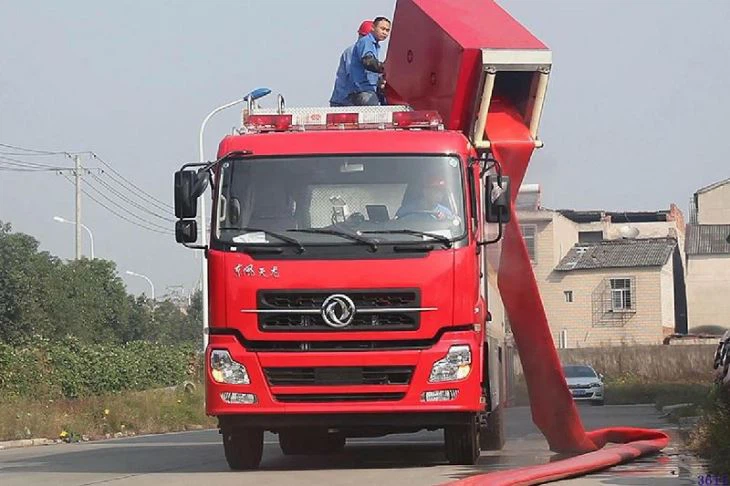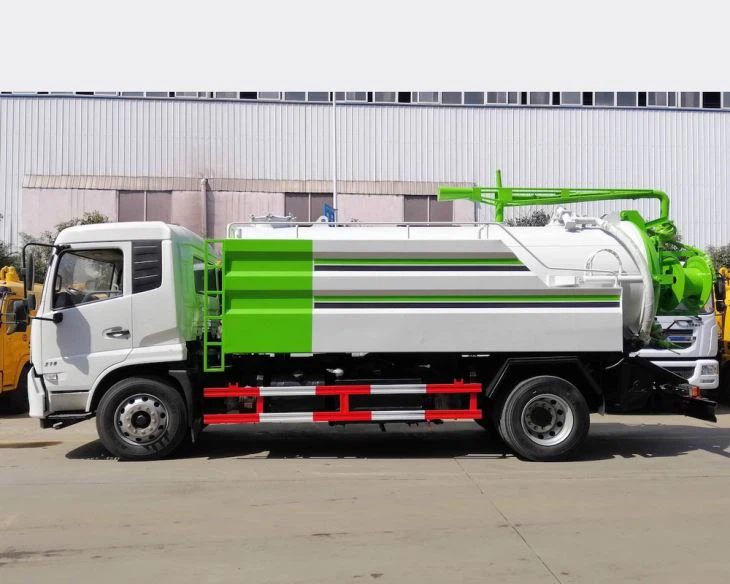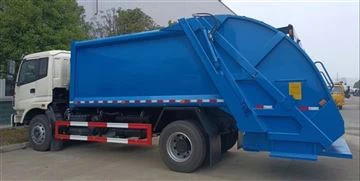Freightliner Vactor: The Ultimate Guide to Efficient Waste Management Solutions

The Freightliner Vactor combines the robust performance of Freightliner chassis with the innovative waste collection technology of Vactor, providing an ideal solution for municipalities and contractors. This comprehensive guide delves into the features, applications, and advantages of using a Freightliner Vactor for efficient waste management.
What is a Freightliner Vactor?
The Freightliner Vactor is a specialized vehicle used primarily for vacuum excavation and industrial cleaning. It features a powerful vacuum system that effectively removes debris such as sludge, sewage, and liquids. Built on the reliable Freightliner chassis, it offers both performance and endurance.
Key Features of the Freightliner Vactor
1. Advanced Vacuum Technology
The Vactor’s advanced vacuum system utilizes a high-efficiency blower, providing consistent suction power for various applications. This technology allows for quick and effective waste removal.
2. Robust Chassis Design
Built on a durable Freightliner chassis, the Vactor is designed to withstand heavy workloads and tough operating conditions. Its sturdy frame ensures longevity and reliability in the field.
3. Versatile Tank Options
Freightliner Vactor vehicles come with customizable tank sizes tailored to different operational needs. This versatility allows contractors to select the tank size that best fits their specific application, whether it’s for septic pumping or catch basin cleaning.
4. User-Friendly Controls
Equipped with intuitive controls and dashboard layout, operators find it easy to manage the Vactor’s various functions. This user-friendly design minimizes training time and enhances operational efficiency.
5. Safety Features
Safety is a top priority for operators. The Vactor includes numerous safety features, such as emergency shutoff systems and properly secured access points, ensuring that work is conducted safely and effectively.

Applications of Freightliner Vactor
1. Sewer Maintenance
The Vactor is widely used in sewer maintenance to remove blockages and perform routine cleanings. Its powerful vacuum system can clear debris from sewer lines effectively, preventing backups and ensuring smooth flow.
2. Municipal Cleaning
Municipalities utilize the Freightliner Vactor for gutter cleaning, flushing of storm drains, and maintaining public spaces. This improves sanitation and enhances the overall cleanliness of urban environments.
3. Industrial Vacuuming
Industries often require heavy-duty cleaning solutions. The Freightliner Vactor’s capability to handle various waste types—including hazardous materials—makes it an essential tool for factories and industrial sites.
4. Vacuum Excavation
The vacuum excavation technique minimizes surface disruption when digging for utilities. The Vactor securely removes material without damaging underground pipes or cables, making it an ideal choice for construction projects.
The Pros and Cons of Using a Freightliner Vactor
| Pros | Cons |
|---|---|
| High efficiency in waste removal | Initial investment can be high |
| Durable and reliable construction | Requires regular maintenance |
| Versatile in application | Training may be required for new operators |
| User-friendly controls | Potential challenges in tight spaces |
Maintenance Tips for Your Freightliner Vactor
1. Regular Inspections
Conduct routine inspections of your Vactor, focusing on the vacuum system, tank, and hydraulics. Early detection of issues can save time and reduce repair costs.

2. Keep the Tank Clean
After every use, ensure the tank is rinsed and cleaned. This prevents buildup and extends the lifespan of your equipment.
3. Check Fluid Levels
Keep an eye on fluids, including hydraulic and fuel levels. Regular checks and timely top-ups can help prevent breakdowns.
4. Follow the Manufacturer’s Maintenance Schedule
Adhering to the maintenance schedule recommended by the manufacturer helps keep your Vactor running smoothly and efficiently.
Cost Considerations
1. Purchase Price
The price of a new Freightliner Vactor can range significantly based on customizations, features, and specifications. Expect to invest a substantial amount initially.
2. Operating Costs
Consider ongoing costs such as fuel, insurance, and routine maintenance. Efficient operation can help mitigate these costs over time.
3. Resale Value
Freightliner Vactor vehicles generally retain good resale value, especially if they have been well-maintained. This can be an important factor for fleet managers assessing their long-term investment.
Choosing the Right Freightliner Vactor Model
1. Understand Your Needs
Identify what applications you will primarily use the Vactor for, whether it’s municipal, industrial, or excavation tasks. This helps you select the optimal model.
2. Compare Specifications
Different models come with varying specifications. Compare factors like tank capacity, engine power, and vacuum performance to determine the right fit.
3. Seek Expert Advice
Consult with a representative from a reputable dealer or manufacturer. Their insights can guide you toward the most suitable Freightliner Vactor for your operations.
Innovations in Vactor Technology
1. Eco-Friendly Options
Recent advancements have led to the development of eco-friendly models that reduce emissions and conserve fuel. These innovations help meet modern environmental standards.
2. Enhanced Efficiency Features
Newer models incorporate technology that reduces operational noise and improves suction efficiency, making them even more effective in the field.
3. Integrated Monitoring Systems
Some Freightliner Vactor models now come equipped with advanced sensing and monitoring systems, allowing for real-time data tracking, which enhances operational reliability and workflow management.
Frequently Asked Questions (FAQ)
1. What is the typical vacuum range of a Freightliner Vactor?
The vacuum range of a Freightliner Vactor typically spans from 15 to 28 inches of mercury, depending on the specific model.
2. How often should maintenance be performed on a Vactor?
Maintenance should be performed regularly, following the manufacturer’s guidelines, which generally recommend inspections every 250 hours of operation or at least once a month.

3. Can the Freightliner Vactor handle hazardous waste?
Yes, many Freightliner Vactor models are equipped to handle hazardous waste, but it’s crucial to follow safety protocols and regulations when doing so.
4. What is vacuum excavation, and what are its benefits?
Vacuum excavation is a digging technique that uses suction to remove soil and debris around underground utilities. The main benefits include minimal surface disruption, reduced risk of damaging buried lines, and enhanced safety.
5. How does a Freightliner Vactor compare to other vacuum trucks?
The Freightliner Vactor is known for its reliability, powerful suction capabilities, and user-friendly systems, often outperforming competitors in efficiency and safety features.
6. What financing options are available for purchasing a Freightliner Vactor?
Many dealerships offer financing options for purchasing a Freightliner Vactor, including loans, leases, and rental agreements tailored to suit business needs.
